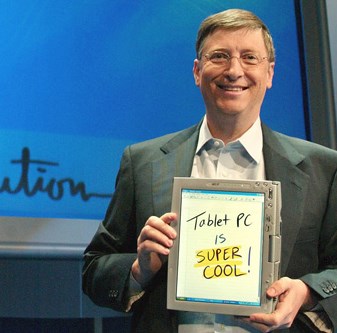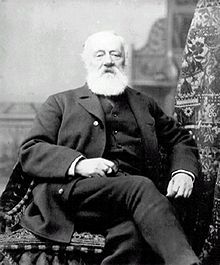See part 1 here and part 2 here.
How Great Ideas are Assimilated into Large Corporations
For all of you entrepreneurs out there who want to know why it takes so damned long to get decisions made, well here it is: you are most likely to start your corporate incursion in the company of a conformist. Conformists are polite, and will tell you how exciting your product or service is, and how much promise it has, and they’ll make you feel really good. But they won’t tell you that they are not about to rock the boat internally. They will also fail to mention the fact that if they actually were to get buy-in from the boss, they would then be expected to implement, which means more work, which means no. So that will spin your wheels for about four months, and you will not be an inch closer to your goal.
You’ll do much better if you are lucky enough to connect with an actual Smuggler, but it will still take a very long time. First, your Smuggler will find out who are friends or foes of your idea, and understand the correct paths for gaining buy-in and for funding. Then there may be months of ‘seeding’ the pain of the problem your product solves, before your technology is even mentioned. The pain points tend to fall along the lines of “competitors are kicking our ass”, or “we had better be prepared for what’s coming”. Fear of being measured against the competition is worse (more motivating) than seeing what’s coming—unless, of course, the competition has already made strategic moves in this area!

Then there’s the task of explaining all possible solutions to various stakeholders, in order to move people toward the conclusion you have been hoping for—that this is a problem worth solving. Then there is even more time spent, understanding multiple solutions and unleashing a PowerPoint barrage that explains why you didn’t select certain vendors (‘CYA PowerPointing’). And if that weren’t enough, there are then iterations of how changes can be made, and committees formed to evaluate ethnographic research and (fill in the blank) other things that hold up progress, whether by coincidence or design.
There are a thousand good ideas, products, services and opportunities out there that can help corporate entities become better and bigger and more profitable. Unfortunately, if you are part of the innovation ecosystem and do not have an understanding of Smugglers and their networks, you’ve already missed the boat.
Smuggled Success
Sometimes Smugglers have to dilute an entrepreneur’s vision. It is a bad feeling. Nobody wants to make a potentially career-altering decision, so we ‘shrink’ the concept and its implications in order to reduce the perceived risk to the stakeholder. By this point we have a ‘yes’ that there is a problem, and we know that a ‘yes’ to even a watered-down solution is a big win, because it creates opportunities for us to pivot back to the original solution.

Ironically, the greatest success for a Smuggler happens when someone else takes credit and requests a bigger budget to deploy the idea. There is no greater win for a Smuggler than the acknowledgement that the idea is outstanding and is heralded by people in the organization without having to be prompted. Smuggling is always about advancing the idea. It is never about the Smuggler.
But we Smugglers can never rest, because once someone else takes over, corporate entropy asserts itself: corners are cut; integration becomes a nightmare; relationships are frayed; budget becomes a weapon; there are endless meetings. Or, better, we do get to manage the pilot, and it is a huge success, but is then shelved because some VP just doesn’t like it. Each of these developments call for more smuggling. Good Smugglers get the word out on the shelved efforts. We create movements. One mind at a time.
Code language of Smugglers:
- Yes
- Let me see how I can accelerate this
- I will find resources
- We need to change things around here
- I will get this approved
- Why wouldn’t we move fast on this
- And finally, are you freaking kidding me? What do you mean we aren’t doing this already?
A Smuggler’s Core Virtue – Hope

In cell division, cohesion is the protein which keeps the sister chromatids together (that squiggly x thing you remember from science class). Anaphase promoting complex (APC) initiates cohesion destruction. Essentially, stuff stops sticking together after APC hits the scene. Fellow Smugglers, you are the most important part of innovation. You are the catalyst, the APC inside the corporate machine, disrupting the status quo and creating opportunities for growth.
In the sociology of science “Matthew effect” describes how eminent scientists will often get more credit than a comparatively unknown researcher, even if their work is similar; it also means that credit will usually be given to researchers that are already famous, even if a grad student did the all the work. Stigler’s law states that no scientific discovery is named after its original discoverer. Smugglers don’t care about credit. They care about results.
World, you have amazing ideas and products. We in corporate America know you need cash and speed to market. In order to get that, you need to stop, think, and understand how tirelessly the Smugglers inside a corporate machine work to create a shared vision of the future. It takes tremendous emotional and mental capacity to be a Smuggler; to answer the question—why am I doing this?
Our struggles don’t get featured stories in your inspirational magazines. We don’t require thanks. We do get just a bit annoyed when the glory of the light side of innovation eclipses our work.
Hail to the Smugglers of new ideas, the igniters of hope and inspiration, who work on the dark side of innovation! Our successes are celebrated behind the scenes, 12 to 24 months before you have even heard of the solution.
—–
SIDEBAR
—–
The Smuggler’s Manifesto
- Smugglers are a symbiotic, beneficial organism in any bureaucracy.
- The Smuggler’s mission is to stimulate new thinking, and to enable new products, new services, and new ways of doing things to infiltrate. They do battle on the side of innovation, against its foe, stagnation.
- The Smuggler’s passion is the safekeeping of innovation in all forms. They do not rest when progress is threatened.
- Smuggling is dangerous, because big organizations develop resistance to change, which becomes disdain for innovation, which morphs into fear and hostility.
- Smugglers become very adept in avoiding traps set for them. They conform as appropriate in the light. But in the dark, they strive to circumvent bureaucracy and overthrow complacency.
- A lone Smuggler will have a difficult time, but Smugglers recognize each other in subtle ways, and readily join forces.
- Through constant communication, Smugglers find new sources of inspiration and share them with each other. This makes the Smuggler an extraordinarily resilient breed.
- Smugglers may have any rank or title, but they are rarely limited by established norms of authority. Instead, they take what they need.
- Smugglers quickly learn the paths to those who need innovation to survive. These are the havens of the Smuggler, where they need not suppress their joys and frustrations.
- Above all, the Smuggler always acts in the best interests of the organization. Even if those who ‘rule’ the organization do not.
Author : Natalie Sweeney
Further Readings
- For an article that deals with the differences between business-models in a startup and in a classic company, see here.
- For an article that explains how to sell innovation consulting, read this.
- For another point of view on what conformism can bring to innovation, see here.
- For a little bit of insight about the Matthew Effect, refer to this.
[…] You’ll do much better if you are lucky enough to connect with an actual Smuggler, but it will still take a very long time. First, your Smuggler will find out who are friends or foes of your idea, and understand the correct paths for gaining buy-in and …read more […]